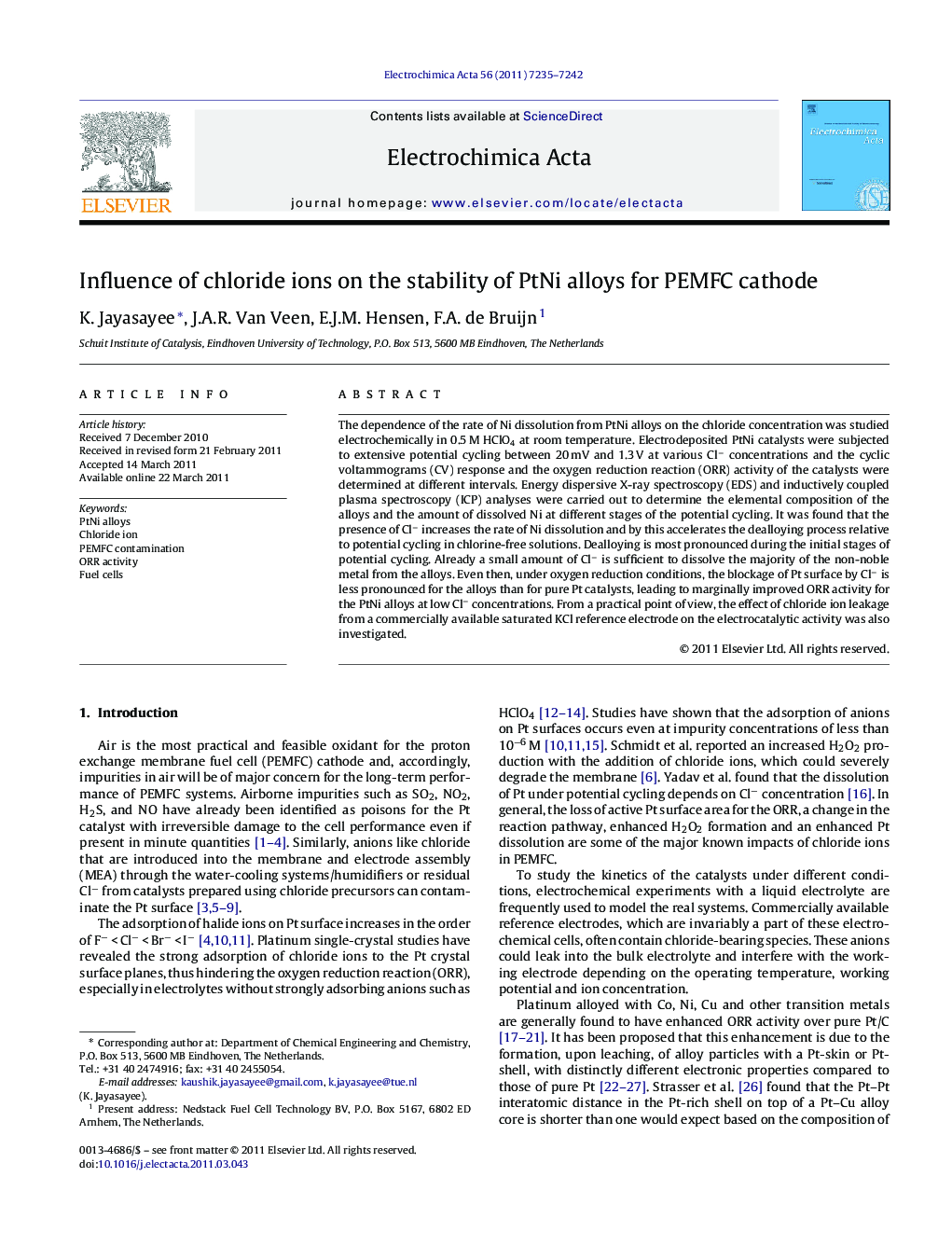| Article ID | Journal | Published Year | Pages | File Type |
|---|---|---|---|---|
| 191058 | Electrochimica Acta | 2011 | 8 Pages |
The dependence of the rate of Ni dissolution from PtNi alloys on the chloride concentration was studied electrochemically in 0.5 M HClO4 at room temperature. Electrodeposited PtNi catalysts were subjected to extensive potential cycling between 20 mV and 1.3 V at various Cl− concentrations and the cyclic voltammograms (CV) response and the oxygen reduction reaction (ORR) activity of the catalysts were determined at different intervals. Energy dispersive X-ray spectroscopy (EDS) and inductively coupled plasma spectroscopy (ICP) analyses were carried out to determine the elemental composition of the alloys and the amount of dissolved Ni at different stages of the potential cycling. It was found that the presence of Cl− increases the rate of Ni dissolution and by this accelerates the dealloying process relative to potential cycling in chlorine-free solutions. Dealloying is most pronounced during the initial stages of potential cycling. Already a small amount of Cl− is sufficient to dissolve the majority of the non-noble metal from the alloys. Even then, under oxygen reduction conditions, the blockage of Pt surface by Cl− is less pronounced for the alloys than for pure Pt catalysts, leading to marginally improved ORR activity for the PtNi alloys at low Cl− concentrations. From a practical point of view, the effect of chloride ion leakage from a commercially available saturated KCl reference electrode on the electrocatalytic activity was also investigated.
► Presence of chloride ions accelerate the dissolution of Ni from PtNi alloys under electrochemical cycling. ► Chloride ions substantially reduce the ORR activity of PtNi alloys. ► Presence of Ni in the catalyst does not mitigate the influence of chloride ions on the ORR.
